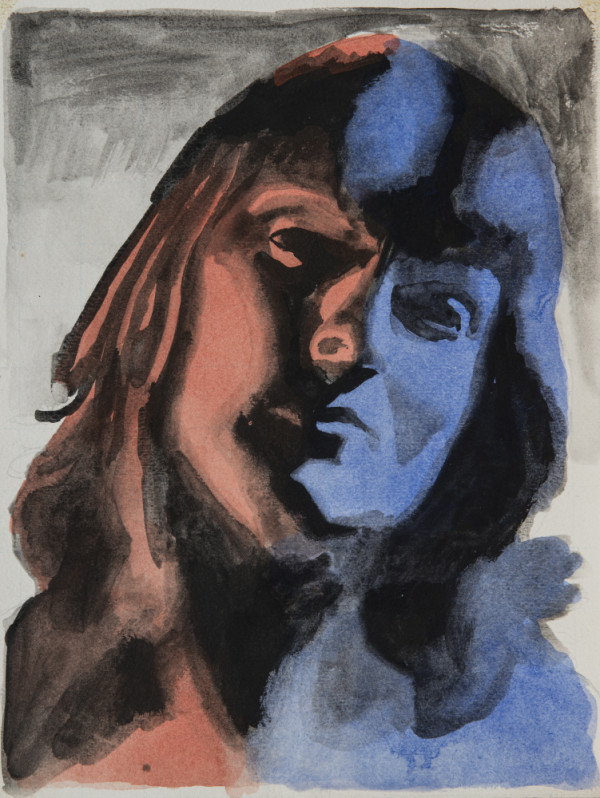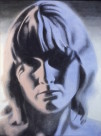Alternating red and blue–the colours of a police car’s warning light. Perhaps the woman is caught in its glare, a suspect of wrong-doing. Perhaps the light comes from a neon hotel sign, a favourite film noir device. However Robert has eliminated any details that would provide clues to location. Red and blue are hot and cool colours. By combining them on a woman’s face, the artist suggests a manic shift in mood from one intense emotional state to another. The light comes from two sides and below, leaving a hard mask-like shadow down the middle of the face. This expressionistic use of light creates an unstable portrait of a shadowy and moody figure.
In one of Robert’s early notes for his “Seal” series, he lists possible common features to link his images together: “1. at least one bright colour; 2. use of pattern; 3. cultural, historical references.” The use of bright colour is unusual in Robert’s work. He is clearly trying to stretch himself as an artist, while at the same time looking for artistic devices to capture the rapturous and poetic language of the novel, By Grand Central Station I Sat Down and Wept, he is freely interpreting. It is worth noting this study drawing was exhibited in the “Seal Upon Thine Heart” show along with the finished painting. In this case, Robert’s study was more daring and spontaneous in its execution than the finished work.

